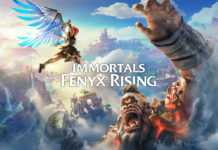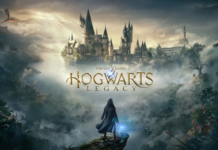
Ubisoft revealed today in their quarterly earnings report that Assassin’s Creed had sold 6 million copies since its release late last year. For those wondering, that puts the game’s success somewhere between ‘totally insane’ and ‘holy ****ing ****!’ on the grade of superlatives.
Even if the game werent created with the idea of a franchise in mind, you can bet that 6 million units sold would have guarenteed a sequel or thirty, and Ubisoft CEO Yves Guillemot confirmed as much saying that the Assassin’s Creed brand would be around for “years to come.” Ubisoft is already preparing to push Assassin’s Creed as its major ‘star’ franchise, impressive considering the company also holds the brand-name power of Tom Clancy and The Prince of Persia franchises.
So what can the industry learn from the success of Assassin’s Creed, an original IP released in the heat of what was arguably the most competitive holiday season in video game history. There are many lessons here, but unfortunately the one that most of the big-name publishers seem to be taking is the idea of bigger and better marketing.
No doubt, Assassin’s Creed was advertised well, but was it really advertised all that differently than other games? CG teaser trailers? Check. Commercials that framed gameplay footage from cinematic angles? Check. Big magazine spreads with more space devoted to artwork than actual gameplay screens? Check. Coverage on all the major video game sites and TV shows? Yep. Really, the only reason to suggest that Assassin’s Creed somehow benefited more than other games from the exact same marketing tactics is the fact that they threw the lovely and very-female producer Jade Raymond out there to act as the voice of the game.
Let me first say there is nothing stopping all the other publishers from using attractive women to sell their games. Let me also say that if you asked each and every one of the 6 million or so consumers that bought Assassin’s Creed what they thought of Jade Raymond, the vast vast majority of them would have no idea who you were talking about. The venues through which Jade Raymond sold the game cater to a very narrow audience, and not every member of that audience went out and bought the game on Jade’s recommendation.
No, Assassin’s Creed did well because it offered something different and presented it very well. It succeeded because the vision of a white-clad warrior jumping across roof-tops, stabbing people, and escaping made people looked, for lack of a better term ‘freakin cool’. The Crusade-era Middle East setting was completely different than the modern, urban, futuristic or WWII-era locales being used in the vast majority of titles on store shelves. Altair, the athletic main-character clad in white-robes was the personification of ‘badassery’ from his powerful attacks, to his swift and agile movements, right down to his methodical ‘bad-mother****er’ walk. The legitimately gorgeous graphics didnt hurt either – the game looked unique, and moreover, it looked gooooooooood.
If publishers want to replicate the success of Assassin’s Creed, they don’t need to pump any more money than they already are into advertising, and they certainly dont need to be demanding Assassin’s Creed clones from their development teams. They need to create something that will stand out from the pack, with inherent and immediate appeal to a wide range of entertainment consumers, and make it look impressive as well. Finally, make the game good too. Most of those six million Assassin’s Creed purchasers probably bought the game due in some part to a recommendation from a friend. Many of them are patiently waiting for the sequel because they enjoyed the game. Make a genuinely bad game, and you lose whatever money-making, franchise-building potential your concept had.










